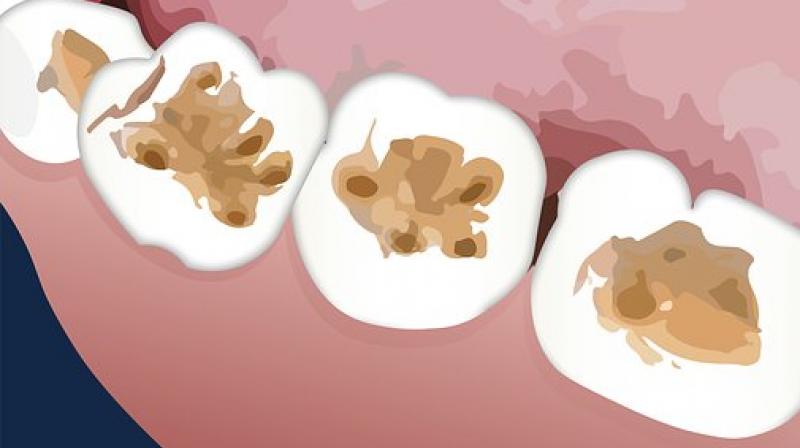Scientists find new way to repair tooth enamel
The recent discovery lets them ‘grow’ tooth enamel.

Did you know that the enamel happens to be the hardest body tissue and cannot repair itself? But scientists have discovered a new method by which the enamel can “grow”. Yes, that’s right! The complex structure can now be reproduced.
Dr Zhaoming Liu, co-author of the research from Zhejiang University, China, said, “After intensive discussion with dentists, we believe that this new method can be widely used in future.” The research team said that the materials used are cheap and the enamel can be reproduced on a large scale.
Tooth decay is quite common today, but most of the cases go untreated. Some of the most commonly used materials to repair damaged tooth enamel are metal alloys, resin, ceramics and amalgam. However, they are not ideal because they don’t last long. “The resin-based material still cannot adhere well on enamel, and they will get loose after around five years,” said Liu. While the issue has been worked on a number of times, scientists have faced problems in most of the approaches. Reproducing a complex structure such as this can be a difficult task.
The study has been published in the journal Science Advances. Researchers have stated how they cracked the solution by developing tiny clusters of calcium phosphate, which is the main component of enamel. The clusters have a diameter of just 1.5 nanometres, a size smaller than the ones produced previously. This has been possible due to the presence of triethylamine, a substance that prevents clumping of clusters.
According to The Guardian, the clusters were tested on crystalline hydroxyapatite, which resembles natural enamel. These small clusters went on to form a layer and fell into a tighter formation compared to the earlier larger clusters. This layer transformed into crystalline over time and expanded the underlying structure continuously, instead of making multiple crystalline regions.
Next, the team used these clusters on acid-exposed human teeth. The scientists discovered that the clusters grew into a 2.7 micrometres thick crystalline layer within 48 hours. This layer was similar to the underlying natural enamel with its fish-scales-like structure. The newly repaired enamel also resembled the natural enamel in terms of strength and wear-resistance.
Dr Sherif Elsharkawy, a prosthodontics expert at King’s College London, who wasn’t a part of the research, felt that the approach was quite exciting. “The method is simple, but it needs to be validated clinically,” he said.
Elsharkawy said that the layers have to be about 0.5 to 2mm thick to tackle cavities. Liu and his team agree that the thickness of the layer is a barrier. But they’re working on it, and are hopeful that it can be tried on humans in a year or two.

